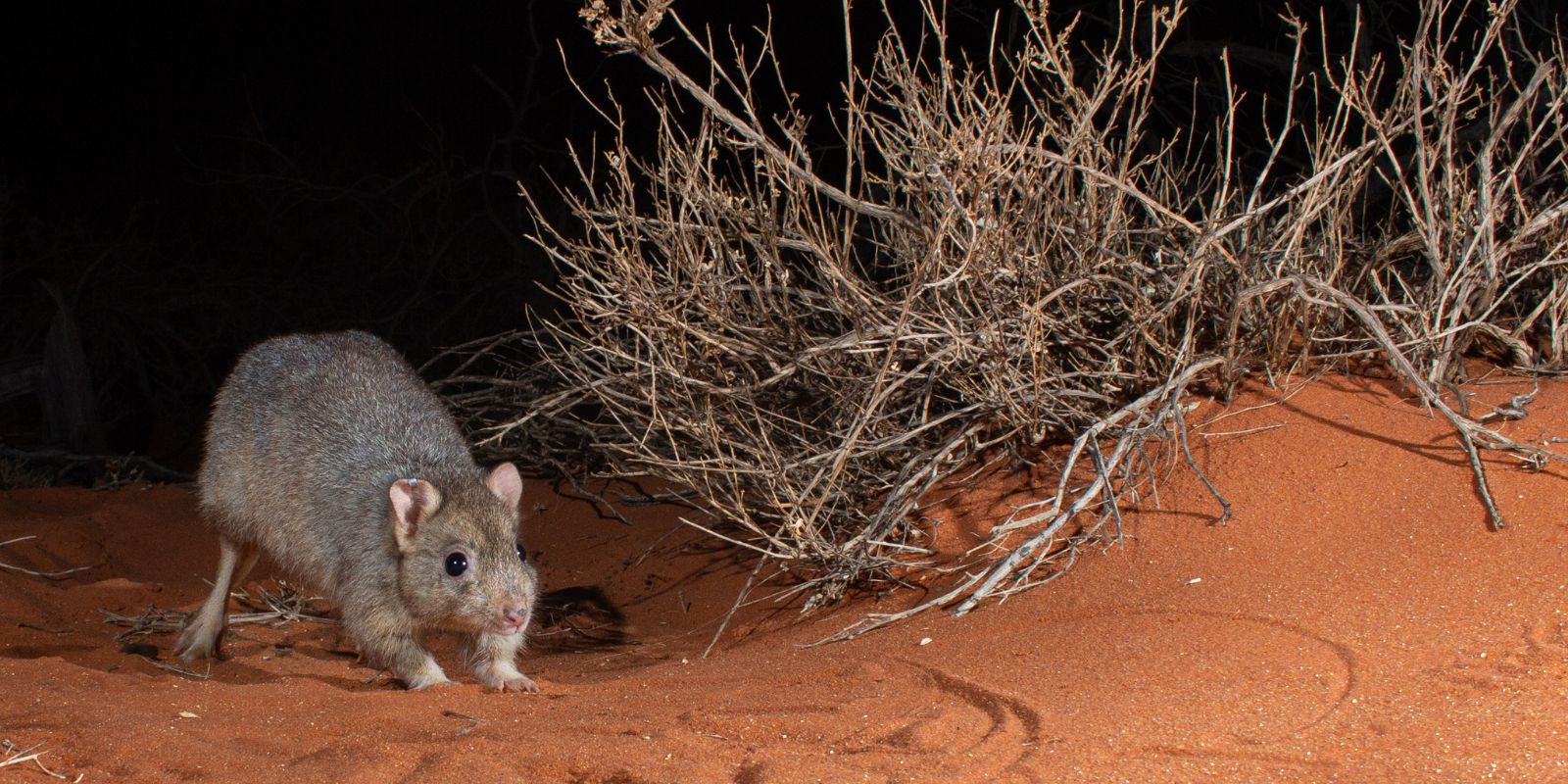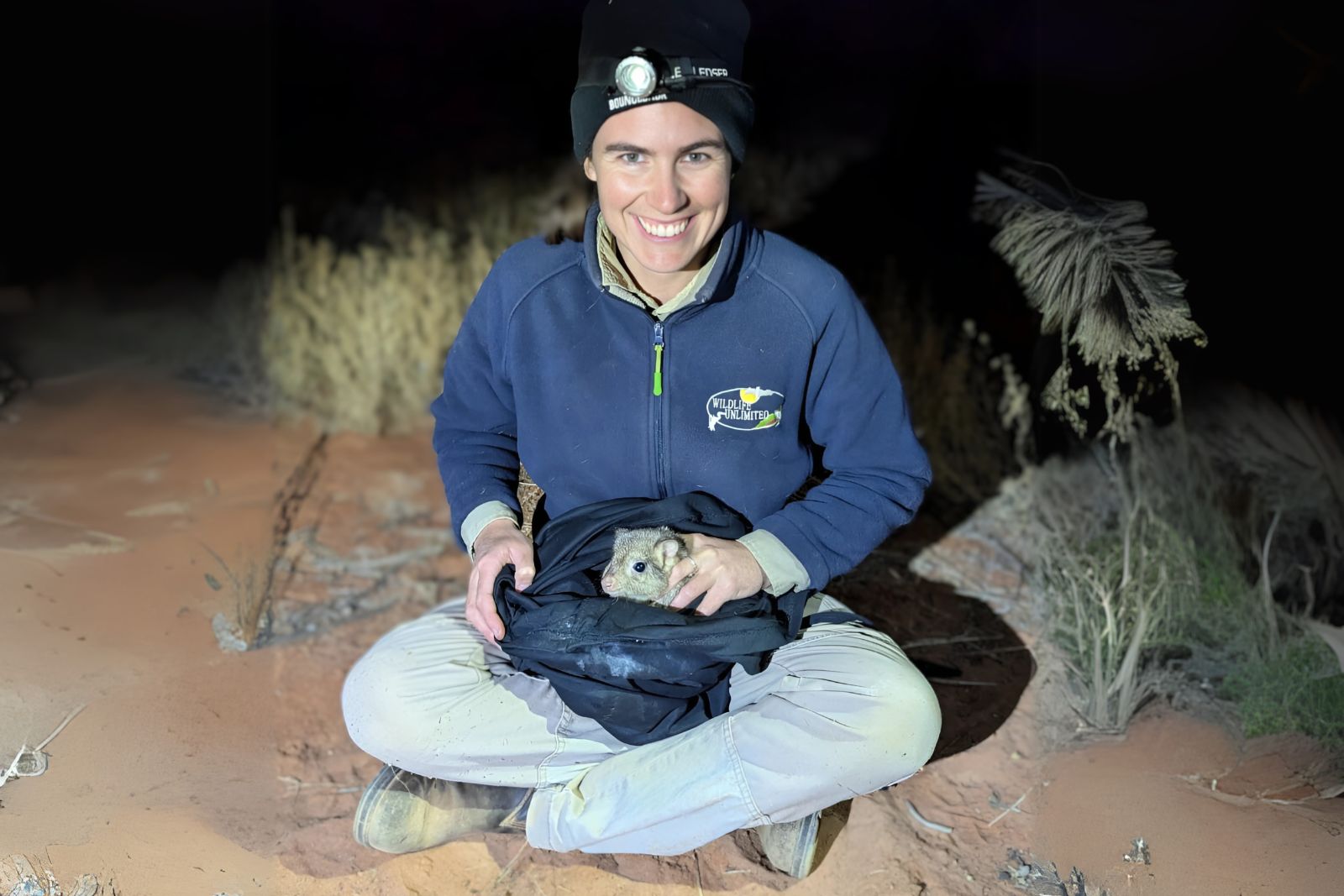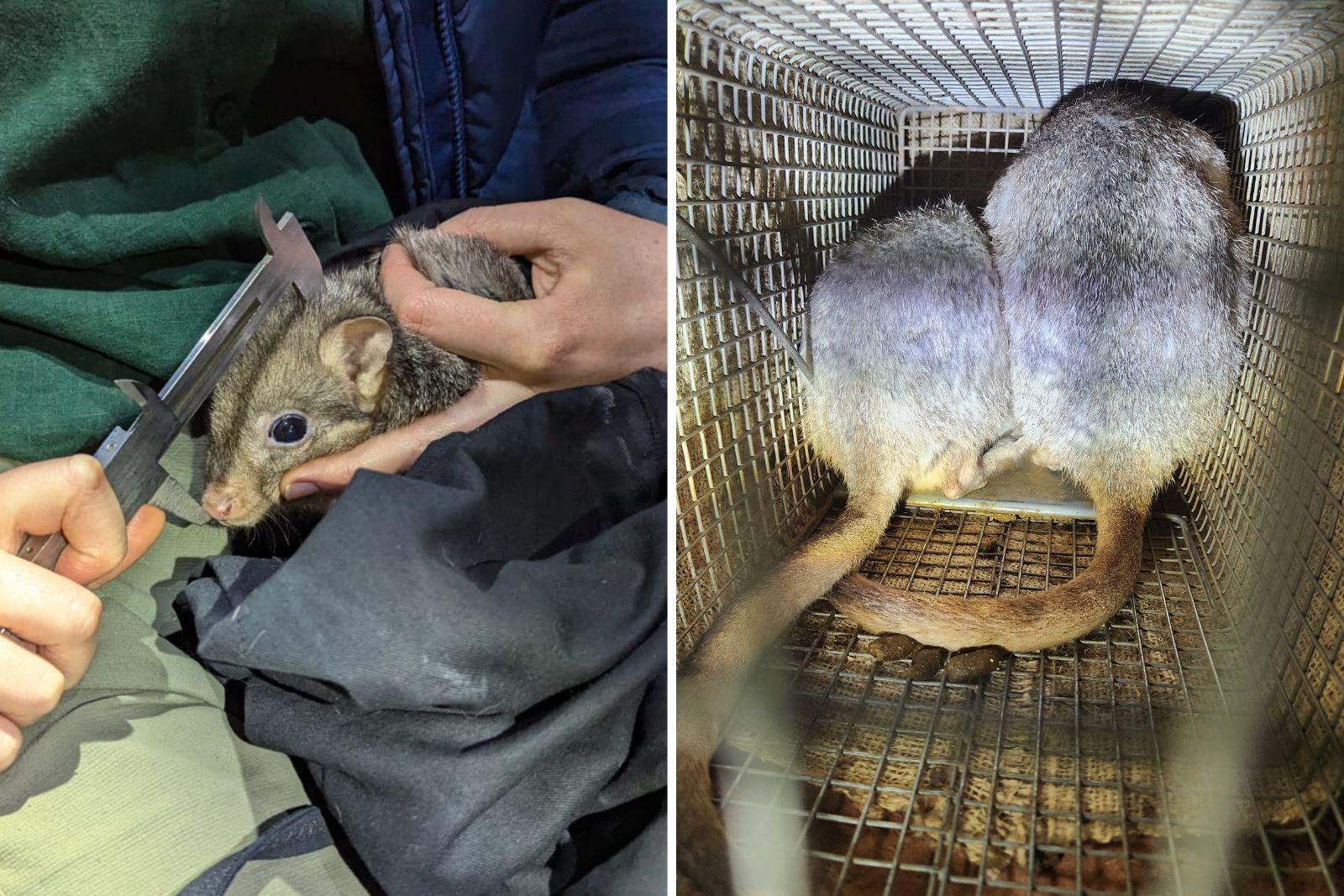The long life of burrowing bettong #2685
Arid Recovery
11 June 2025

She’s survived droughts, overpopulation, and relocation; and might be the great-great-grandmother of nearly 400 burrowing bettongs. Meet Nana Tong, the 9-year-old bettong matriarch quietly shaping a marsupial dynasty at Arid Recovery
Bettong ear tag #2685. Known affectionately as Nana Tong by staff, this burrowing bettong has become something of a legend at Arid Recovery.
First caught on 24 August 2016, weighing just 450 grams, she was likely a “young at foot”, still dependent on her mother. Since then, she’s been trapped 20 times by nine different people. In that time, she’s lived through just about everything the Reserve has thrown at her: one of the worst droughts on record, a bettong overabundance followed by food shortages, and even relocations for research or population management.
Yet Nana Tong kept going.

UNSW research officer Mahalia Booth-Remmers has caught Nana Tong mulitple times during her field work.Every time a bettong is trapped, we record its weight and assign a body condition score. It is a simple system that ranks animals as poor, fair, good, or excellent, based on visible fat reserves, muscle tone, and overall health. These scores aren’t just for individual health; they help us track how the environment is doing. When bettongs start turning up in poor condition, it’s a red flag that something in the ecosystem is off balance, such as drought, food availability, or overpopulation. In Nana Tong’s case, she was recorded as poor only during the intense drought of 2018 and 2019. Not surprisingly, those were also the only two years she didn’t have a pouch young. Every other time she was captured, she was either in fair or good condition and carrying the next generation of bettongs.
Female bettongs can begin breeding at just 7–8 months of age (around 880–900 g), and can have up to three joeys per year under the right conditions. Each joey spends about 115 days in the pouch, and breeding rarely slows down unless nature does, like during extreme dry spells.
 Nana Tong has been caught in a cage trap 20 times in the last 9 years.
Nana Tong has been caught in a cage trap 20 times in the last 9 years.
How many bettongs could be from Nana Tong?
We crunched the numbers (just for fun). Using conservative, biology-based assumptions; let’s say Nana Tong started breeding in 2017, had three joeys per year, except in 2018 and 2019, half were female, and each daughter bred for five years. By 2025, her family tree could look something like this:
Generation Offspring Count
1st: direct joeys 21
2nd: grandjoeys 114
3rd great-grandjoeys 252
That’s 387 bettongs, all potentially descended from one tenacious female.
The legacy of one bettong
Lifespan estimates for burrowing bettongs vary. Some say they can live up to 11 years, others suggest just three years in the wild. What we know for certain is this: we have a 9-year-old female who has survived drought, boom-and-bust cycles, and major ecological changes, and that she’s still going. We may never know how many of her joeys made it, but Nana Tong reminds us why long-term monitoring matters. Every weight, every ear tag, every condition score is part of a bigger story, one that connects the fate of an individual animal to the health of an entire ecosystem.
One bettong. Nearly 400 descendants. And with the timing just right, it’s even possible that a fourth generation , her great-great-grandjoeys, may be starting to emerge by the end of 2025.
Not bad for a marsupial that makes farting noises when it is hopping away.

Bettong #2685 getting her head measured (left), and perhaps some of Nana Tong's offspring caught in a cage trap (right)
Photo credits: J. Kelk, C. Rutherford, P. Glover